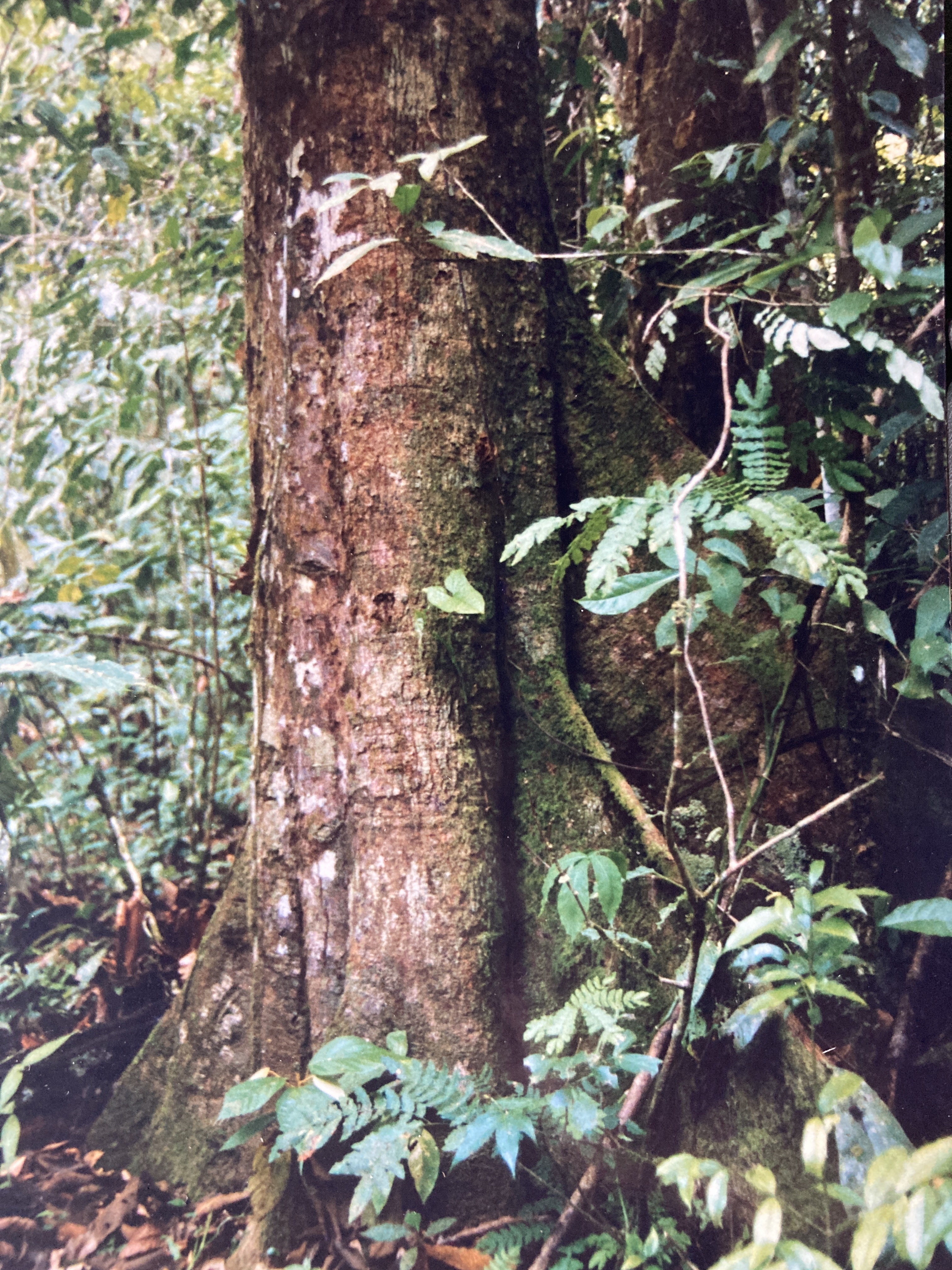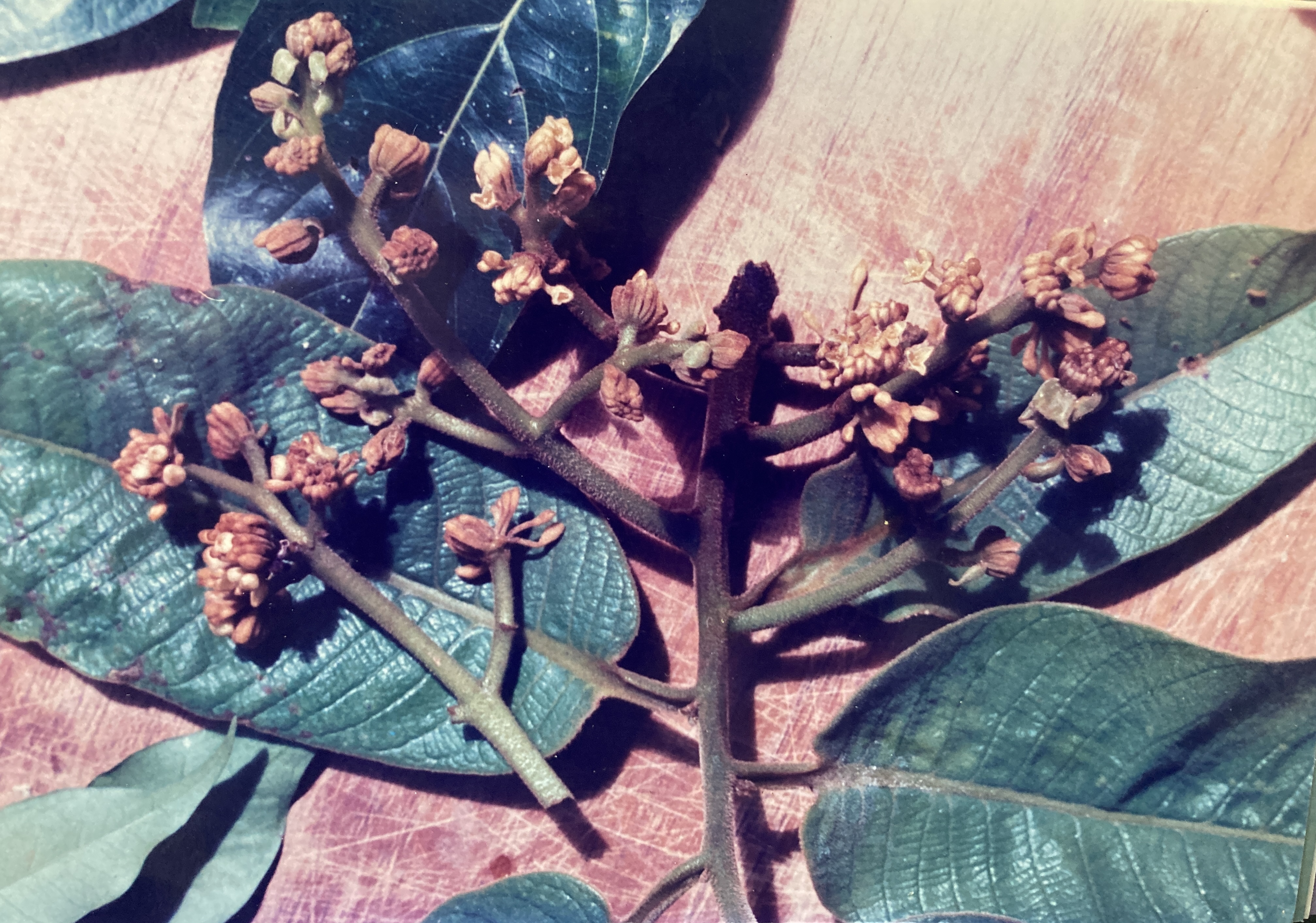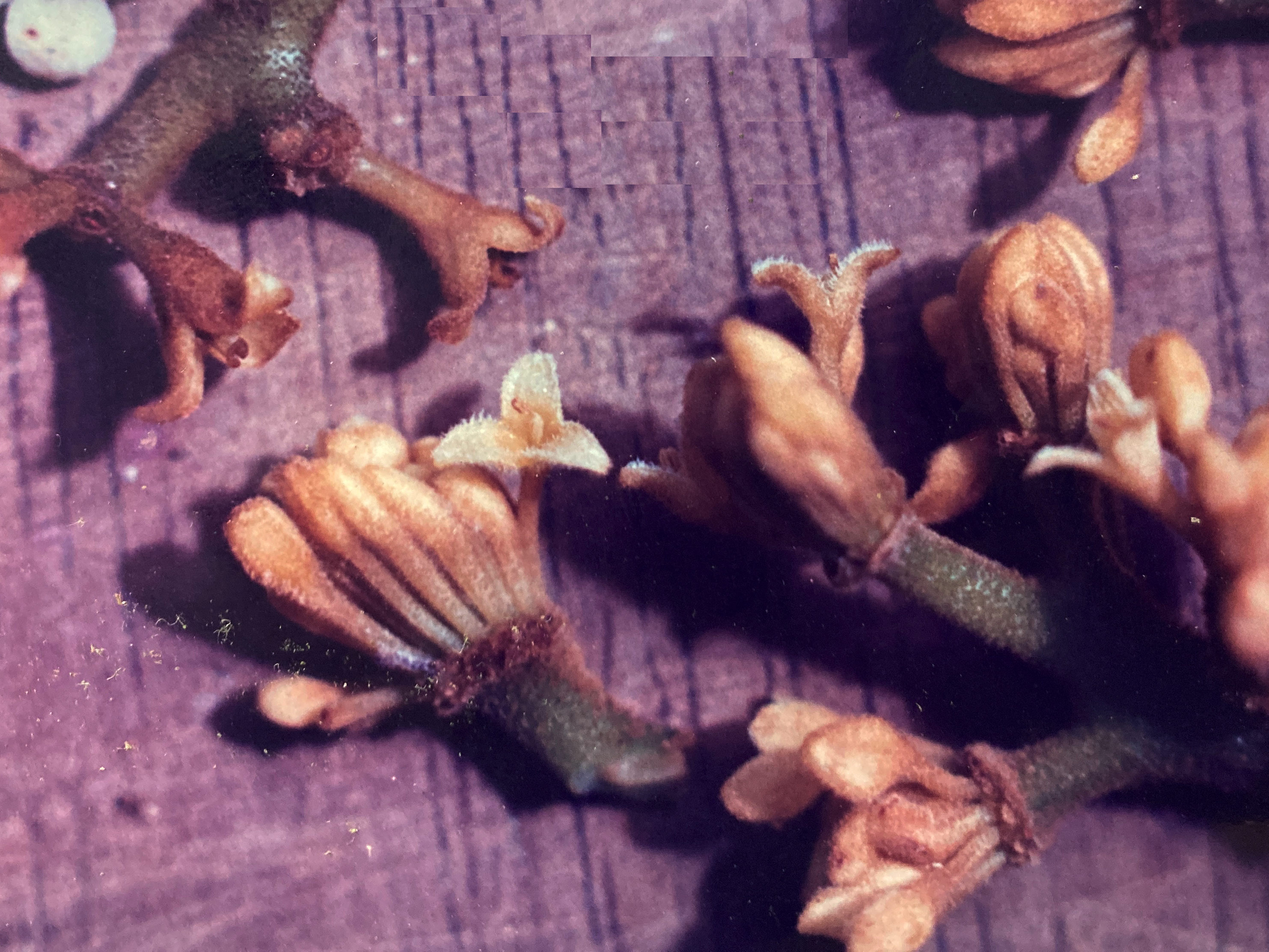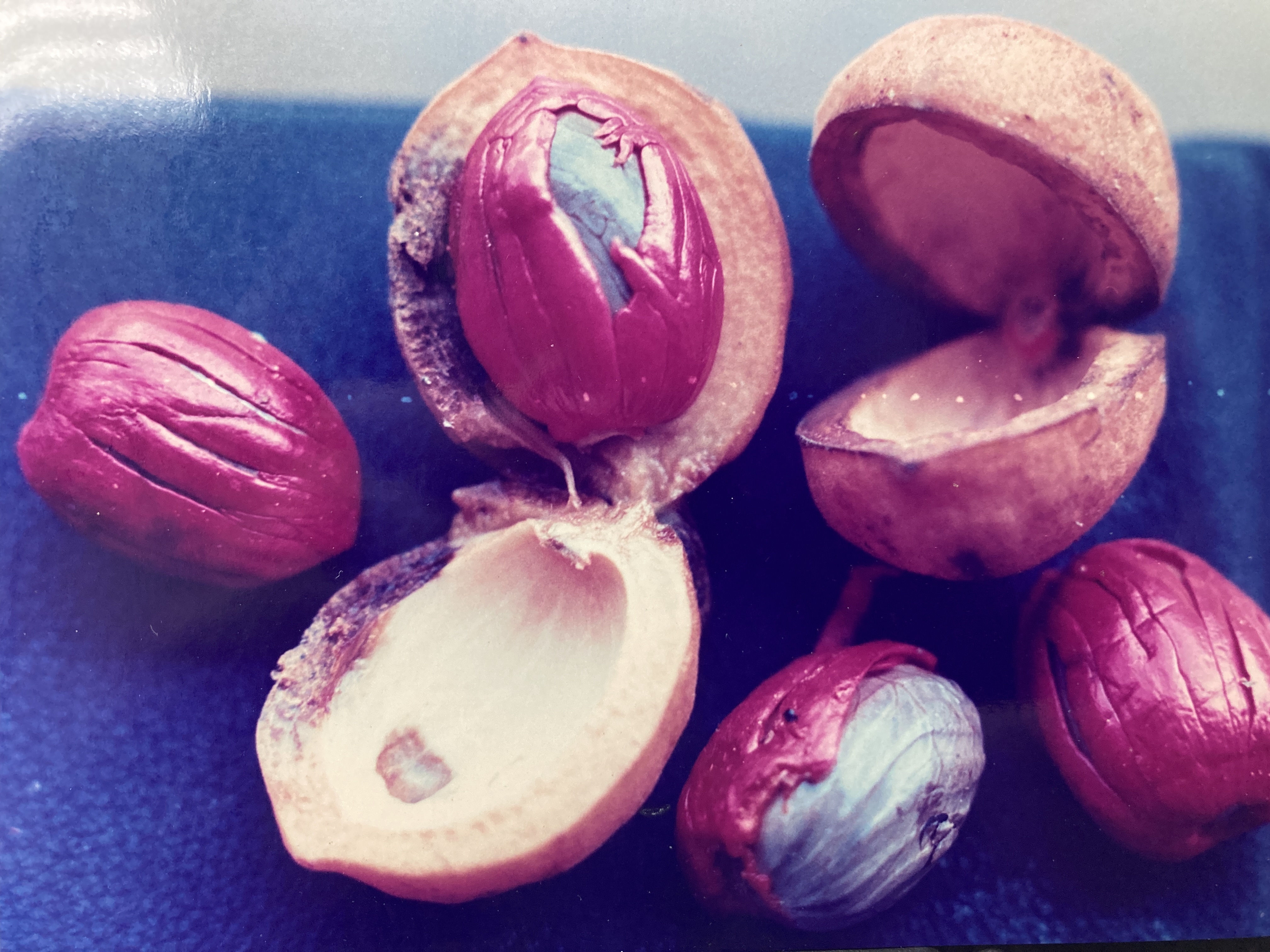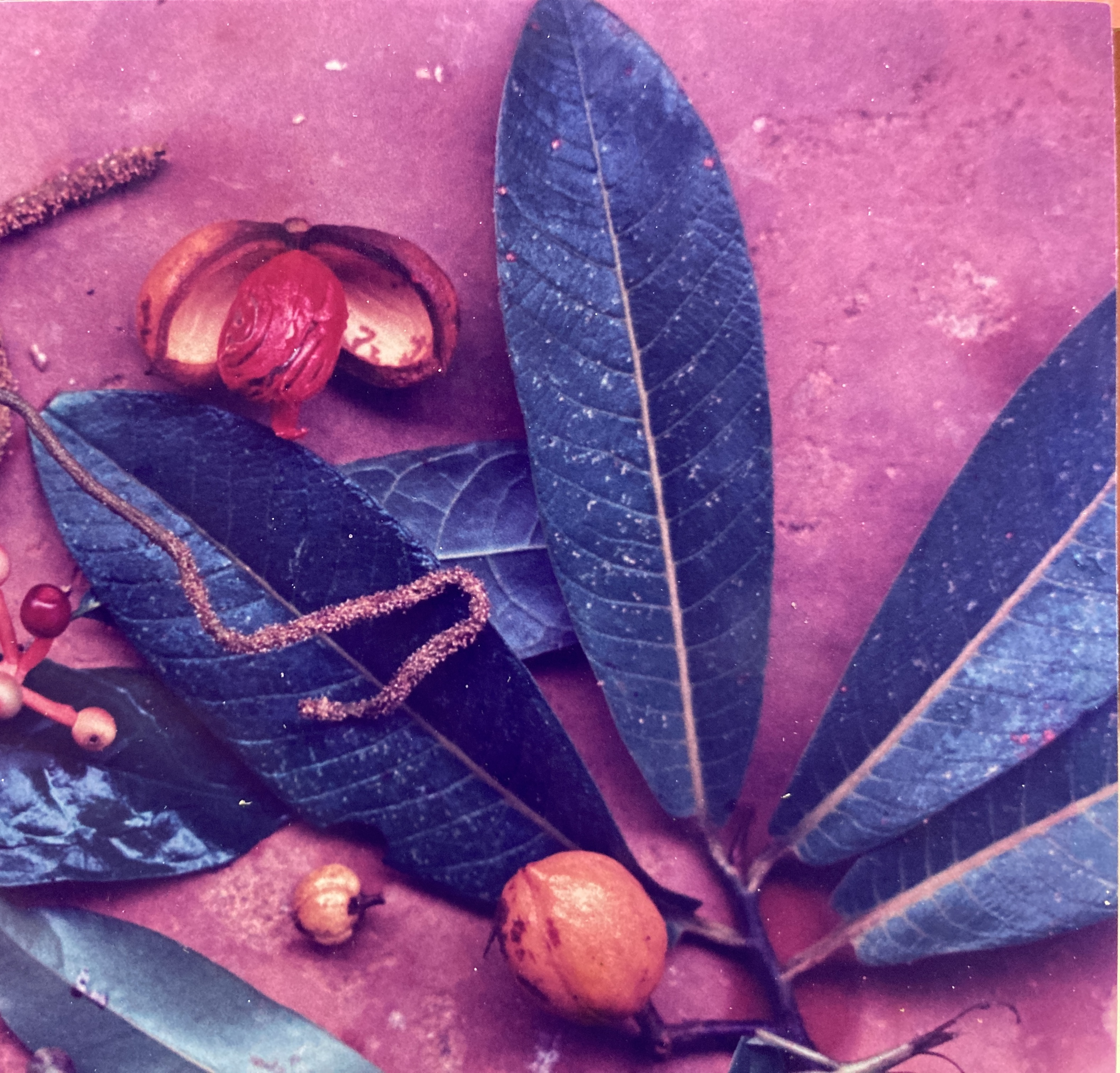FRUTA DORADA
Common evergreen, canopy tree (25-35 m) distributed thinly though evenly throughout Manuel Antonio’s varied habitats. A true resident of the primary tropical forests of the southern Pacific coastal lowlands, Fruta Dorada (Golden Fruit) is among the more easily identifiable trees of the region thanks to its distinctive, nearly monopodial growth habit. Virola’s common name derives from the spectacular, brightly colored fruits it generates in abundance.
Description: A true pillar of the rainforest, Fruta Dorada has an incredibly straight and perfectly cylindrical trunk ( 85 cm) that rises, without branches, through the lower levels of the jungle and high into the canopy. Clad in smooth, gray or brown bark that is often vertically streaked by fine, parallel cracks, the otherwise regular bole abruptly gives rise to flat and straight buttresses about a meter above the ground. Branches are restricted to the uppermost fifth of the trunk and they emerge perpendicularly to it, extending horizontally outwards. Older (lower) branches are the longest, and limbs decrease in length with position towards the top. The striking, distinctively pyramidal crown thus formed is quite open and thin. According to Allen (1956), Virola has red sap – a characteristic alluded to by the Honduran and Guatemalan common name for this species: “sangre”.
Leaves (16 by 5.5 cm) are dark green, simple, and alternately arranged. Long and narrow, mostly lanceolate in shape, the blades present a slight and characteristic increase in width toward their distal ends (slightly spatulate). The long petiole (1 cm) and well-formed drip tip of each leaf are linked by a prominent and pinnately arranged network of leaf veins. Twigs, veins and all blade surfaces (but especially inferior ones) are densely covered by a soft, yellow-brown, velveteen pubescence, some of which is composed of branched hairs. Annually and beginning in September, trees rapidly shed all foliage. Briefly bare, they immediately re-foliate, with the last individuals completing this process during the first months of the new year.
Flowers first appear during this deciduous period, and they are particularly evident among the leafless branches, though they continue to be present even as the leaves grow. Long, mustard-brown flower panicles (10-15 cm), emerging from old (or sometimes current) leaf axils and protected by large, leaf-like coverts, end in flat-topped receptacles that hold thirty or more blossoms each. The small, petalless, somewhat fleshy blossoms (1 by 7 mm in diameter) are essentially composed of three narrow, yellowish sepals. A dioecious species, Fruta Dorada’s two flower types are very similar, with the female variety being slightly browner and the larger of the two. In each, a solitary, central pistil and ovary replaces the male’s anthers. All blossoms have a mild, somewhat spicy aroma that is reminiscent of oregano or nutmeg. Flowering in Virola is not highly synchronized and it occurs over an extended period, lasting from October to February. Individual trees participate for only about one month of this interval.
Fruits (3.5 by 3 cm) become visible soon thereafter (on female trees), and mature in about four months. Bright yellow, each consists of a thick, dehiscent, two-part capsule harboring a single, large (2 cm) seed. A distinctive, scarlet red aril, formed from a partially fused mass of finger-like shreds, enshrouds the seed. Brown and ovoid, the ridged seed itself is marked by a network of thin, dark-brown veins that are etched into its surface. Harvests occur from late April to early June. Germination begins within six weeks of fruit fall (often as soon as late June) in the moist soil of the early rainy season. Seedlings, some twenty centimeters tall and bearing two hairy leaves, may then carpet the ground underneath parent trees.
Similar Species: Fruta Dorada is readily distinguishable from all other tropical forest trees – with the exception of other species of Virola – thanks to its unique and easily recognizable growth form. Monopodial trunks with pyramidal crowns are traits that appear regularly within this genus – as are fruits consisting of red-ariled seeds in thick capsules. Of the five or so Virola species found in southwestern Costa Rica, only V. koschnyi has leaves that are wider distally than proximally (albeit only slightly). Also, only V. koschnyi has capsules that are bright yellow in color: the others producing fruits that remain green even when mature. In MANP, the only other Virola species present is V. sebifera. This much smaller, thinner tree is unlikely to be confused with V. koschnyi (see description).
Natural History: Fruta Dorada flowers are pollinated by insects and even small, nectar-gathering birds. Its fruits are dispersed by larger birds that seek the attractive and nutritious aril. Chestnut-mandibled Toucans are notable examples here, seen feeding on V. koschnyi fruits in the Osa Peninsula, as are Crested Guans, observed conducting the same activity in Punta Leona. In Manuel Antonio, seed dispersal success is poor, with some seedlings appearing at locations distant from known parent trees but with the majority of new treelets concentrated in a dense mat directly below the female Virola canopy. Since toucans and guans no longer exist in Manuel Antonio in their former numbers (due to habitat destruction), Virola trees have undoubtedly lost a few of their primary dispersing vectors.
Uses: Fruta Dorada wood is used in rough construction. It is a light, reddish-brown wood of poor quality. Allen says it is not durable and that it was used for boxes, concrete forms, and plywood corestock.
Distribution: V. koschnyi is found along all MANP trails and in all MANP habitats except for the immediate, sandy, coastal zone. It prefers the better-drained soils of hills and ridges. In Costa Rica, it is found in the Osa Peninsula as well. V. koschnyi ranges from to the Brazilian Amazon.
Images: Tree Trunk Trunk2 Leaf Flowers Fruit Fruit2 Fruit3 Fruit&Leaves

